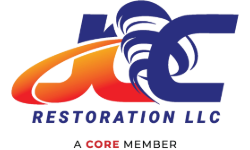When a fire burns in your home, the damage isn’t just from the flames. Smoke and soot can cause just as much damage, if not more. That’s why it’s important to understand smoke and soot damage when you’re restoring your home after a fire.
Smoke and soot can penetrate every part of your home, including the tiniest cracks and crevices. The damage they cause can be difficult to see, but it’s important to remember that it’s there. Inhaling smoke and soot can be dangerous to your health, and the damage to your home can be extensive.
The first step in understanding smoke and soot damage is to identify the type of smoke. There are three types of smoke:
1. Wet Smoke – This type of smoke is from a slow-burning fire and is sticky and smeary. It can be difficult to remove and will often require professional cleaning.
2. Dry Smoke – This type of smoke is from a fast-burning fire and is powdery. It’s easier to clean than wet smoke, but can still be difficult to remove completely.
3. Protein Smoke – This type of smoke is from a fire that’s burned protein-based materials, like food. It’s often invisible, but can leave a strong odor.
Once you’ve identified the type of smoke, you can begin to assess the damage. Smoke and soot can cause staining, discoloration, and etching. They can also cause corrosion, which can weaken the structure of your home.
The best way to clean smoke and soot damage is to hire a professional fire restoration company. They will have the knowledge and experience to safely and effectively clean your home.
If you’ve experienced a fire in your home, don’t try to clean the damage yourself. Hire a professional fire restoration company to assess the damage and begin the restoration process.
